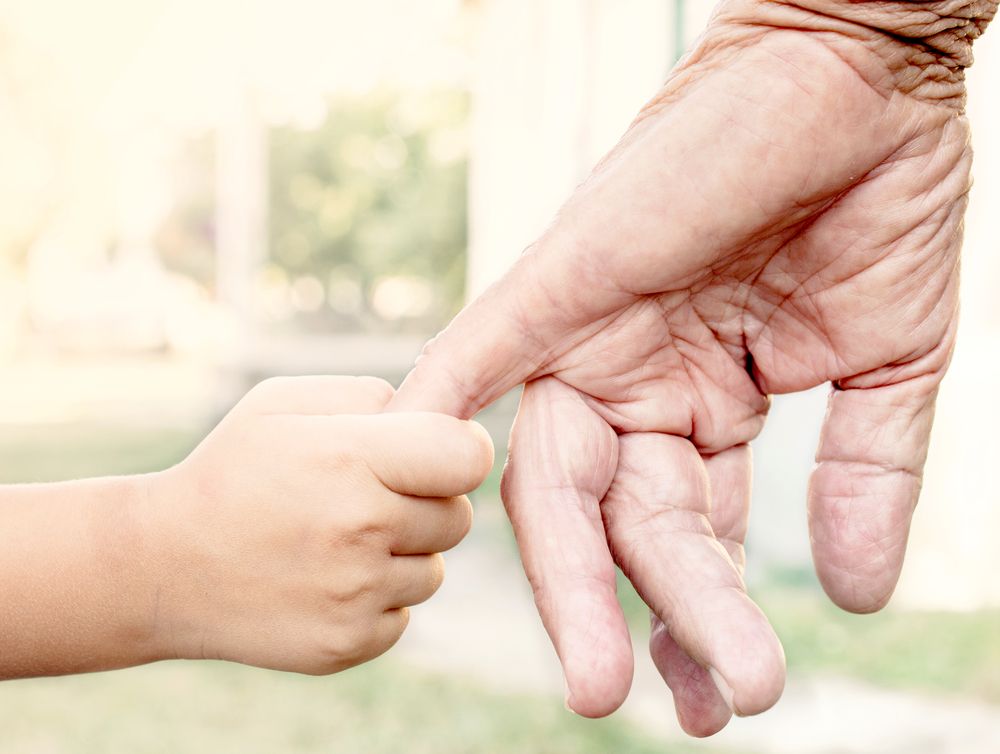The amazing benefits of intergenerational care
Published on Wednesday, 20 March 2019
Last updated on Tuesday, 31 December 2019

Intergenerational care brings child care and aged care together and whether it involves an informal playgroup visiting a nursing home, or a child care service and aged care service sharing facilities and activities, this combined care approach has much to offer.
Here we look how intergenerational care is enriching lives and benefitting communities the world over.
What does intergenerational care look like in New Zealand?
The Park Early Learning Centre and Wairarapa Intergenerational Playgroups are two great examples of intergenerational care in this country.
Based in Wellington, The Park is a beautifully-designed early childhood service built on the same site as the Village At The Park retirement village.
The Park's curriculum includes an Intergenerational Care Programme, which involves children visiting the aged care home and enjoying planned and spontaneous interactions with the older residents.
The Park says that both generations, 'Enjoy each others' company and appreciate each others' contributions within our community,' while Village at the Park has received a New Zealand Aged Care Association Excellence in Care Award for its intergenerational programme.
Wairarapa Intergenerational Playgroups is another programme that brings young children and seniors together. Founded by mum of two, Lucy Adlam, the playgroups are currently held in seven aged care homes and see children playing in the middle of the room, with elders sitting on the side to enjoy music therapy, cuddles and a feeling of community.
About 350 people are involved with intergenerational playgroups in NZ and with demand growing, Ms Adlam told Stuff that she'd love to have more volunteers, aged care homes and kindergartens on board.
What are the key benefits of intergenerational care?
While the care and play sessions discussed above have been described as 'transforming' and 'life-giving' for older people, it's not just seniors who reap the rewards, preschool aged children gain myriad benefits from regular meaningful interactions with older people. Here's how intergenerational interactions benefit both young and old:
| The Benefits for Children | The Benefits for Elders |
|---|---|
| Provide opportunities for children to learn from and connect with older members of the community. | Give seniors a sense of purpose and community, i.e. a feeling of contributing to society. |
| Help improve children's behaviour towards older people. | Combat feelings of loneliness and isolation. |
| Improve youngsters' social awareness and skills, e.g. as they learn to help, share and cooperate in a nurturing environment and gain 'generational intelligence'. | Increase older people's sense of dignity. |
| Provide children with positive role models and mentors, especially if the child’s grandparents are not in close or regular proximity to them. | Improve their social, physical and cognitive outcomes, e.g. when elders speak, smile and get more active through play. |
| Change community perceptions about the elderly and the ageing process to be more positive. | |
What does intergenerational care look like elsewhere in the world?
With so many positives, New Zealand is not alone in seeing the merit of combining child care with aged care.
In the UK, Apples and Honey Nightingale House operates a day care service in the grounds of an aged care home, with juniors and seniors sharing daily planned activities in a fun environment.
In Canada, Kipling Acres is one of several aged care homes that have an early learning and child care centre in-house, complete with 'move and groove' sessions, cooking, bingo and other activities that build connections between the generations.
Over the ditch in Australia, there are several intergenerational playgroups operating at aged care homes, including the weekly meet-up at SummitCare's Wallsend facility.
Australia is also home to Griffith University's Intergenerational Care Project, which has involved preschoolers being connected with seniors to trial these two models of intergenerational care:
- The Shared Campus Model, where child day care and aged day care centres shared a multi-function room on the same site; and
- The Visiting Model, where either the children or the seniors were transported to the other centre for one to two hours of intergenerational activities twice a week.
As part of the Project, Griffith University will provide a report to the Australian Government, evaluating the best approach for our neighbours.
While back in New Zealand, we're excited to see the success of current intergenerational care programmes; and look forward to increased connections between juniors and seniors - for the good of individuals and society as a whole.
Related Articles

What types of child care are there?
An overview of the different child care services available to families, including centre based care and in-home care options, and how families can access them.

What to Do When You Can't Find Child Care?
Creative child care options and alternatives for people who haven’t been able to secure their preferred type of child care service and need to return to work.

Successfully using grandparents for child care
Tips and tricks for successfully incorporating grandparents in your child care arrangements, including payment, checking in, rules, guidelines and more.
